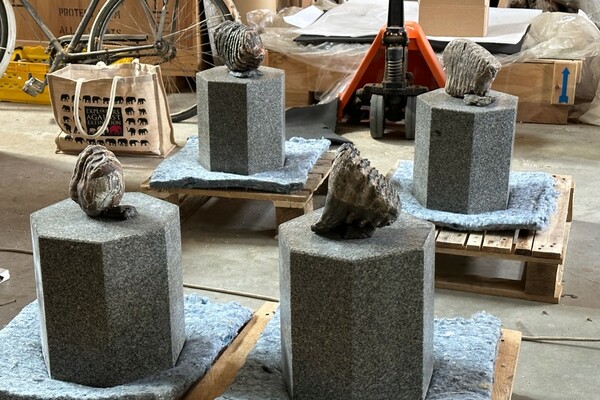
The initial idea for the Extinction Collection hit Explorers Against Extinction co-founder and trustee, Rob Ferguson, as he walked the beach in Happisburgh, looking up at the cliffs and turning a fossil over in his hands.
For those of you who don't know, Happisburgh is where Explorer HQ is based - the village sits on the north-east coast of Norfolk, its red and white striped 18th Century lighthouse a well-known landmark.
Rob knows Happisburgh particularly well - he grew up in the village, got married in the church and lives with his family less than a mile from the beach.
Even in his short lifetime he has seen this part of the Norfolk coastline change, sculpted by weather and waves.
Happisburgh receives its fair share of headlines - not just because it is the oldest known site of human occupation in the UK, but because it is predicted to be one of the first communities in the UK that will be lost to climate change, ceasing to exist in the next 100 years.

As Happisburgh’s sand cliffs are eroded by rising sea levels, sediments laid down in what was once the estuary of the River Thames are exposed, revealing the relics of species and early humans who lived nearly one million years ago.
With a keen eye, and a degree in archaeology, Rob can often be found walking the beach at low tide and over the years has found everything from fossils to flints.
It is these beach finds and the history of Happisburgh which provides the inspiration for the Extinction Collection. You can find out more below.
Image: Happisburgh beach by Paul Goldstein
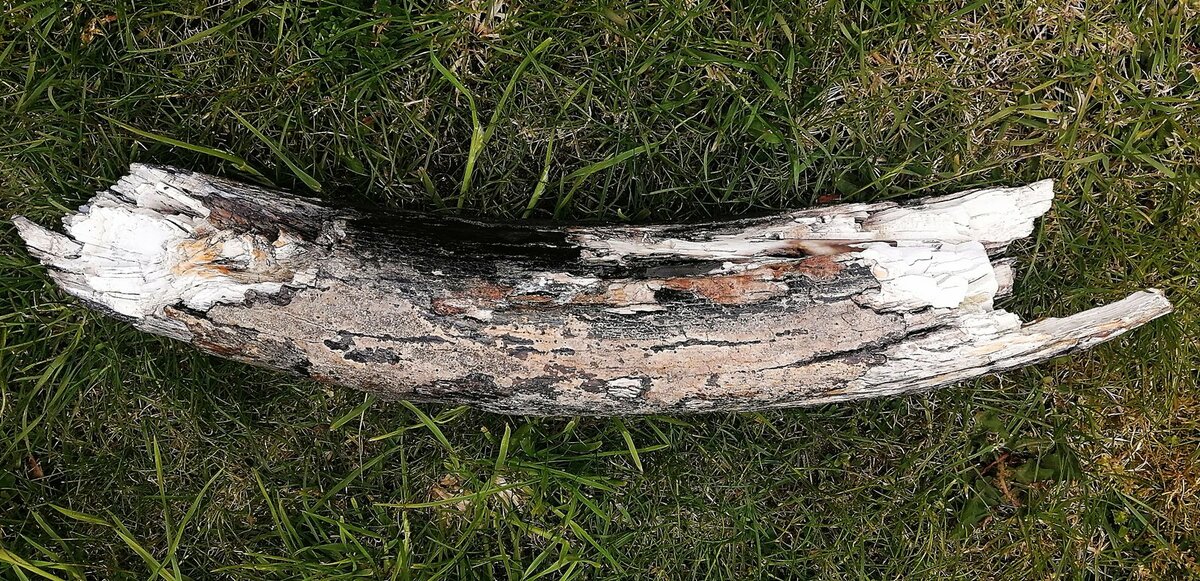
The idea was simple - to create a collection of artworks to highlight the devastating consequences of climate change using some of the relics found on Happisburgh beach as a springboard for raising awareness.
Artworks featuring fossils and artefacts from the beach represent extinct species, telling the story of historic climate change. Other piecesshine a light on today's endangered species, threatened by anthropogenic (man-made) climate change.
Audio and visual aids help to tell the story behind the artworks, and invite visitors to consider our relationship with Earth through time.
Image: a segment of a mammoth tusk, found off Happisburgh beach
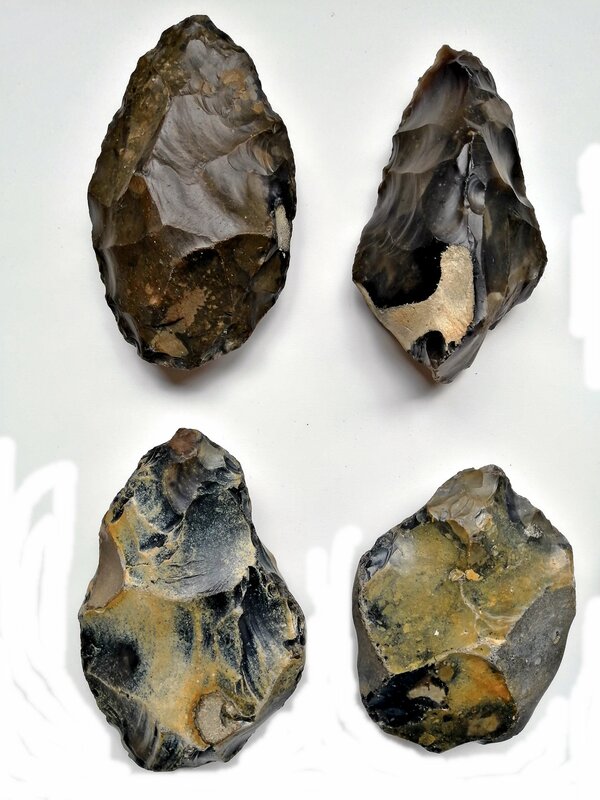
Planning started over a year ago now, with the aim to exhibit and auction/sell the pieces in autumn 2023 alongside Sketch for Survival.
Things have gone rather well, and the list of famous artists keen to lend their support to the collection continues to grow.
As a result we have decided to showcase the Extinction Collection during an extended 2024 tour instead.
In 2023 we will exhibit our On the Brink collection alongside Sketch for Survival.
Image: hand axes found at Happisburgh
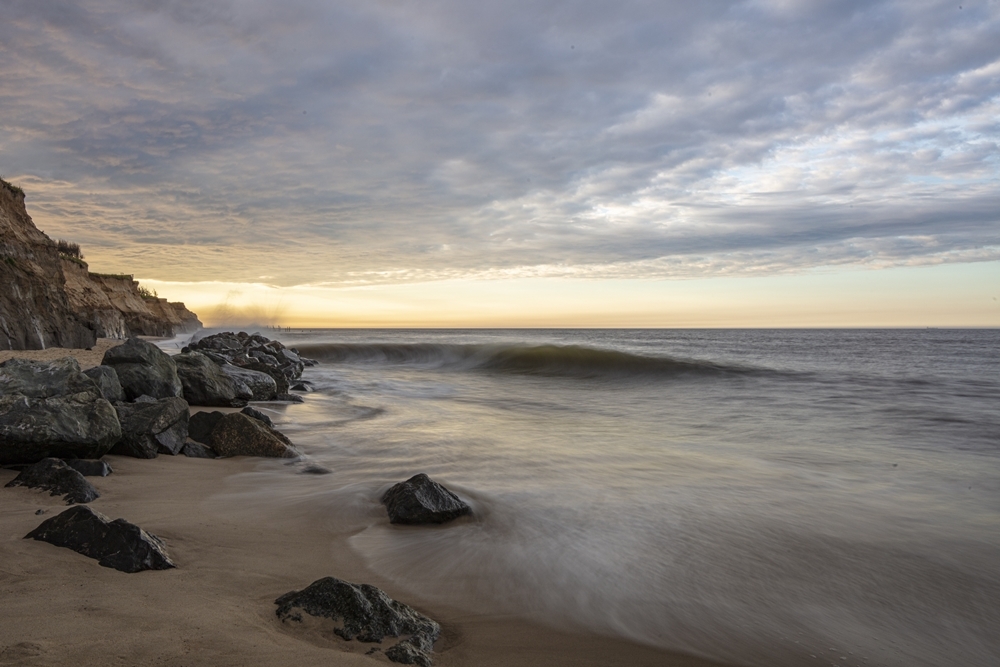
We anticipate the 2024 Extinction Collection will be worth waiting for - it will feature around 20 artworks, ranging from sculpture to paintings and illustration.
Three headline pieces have been created by three internationally renowned artists: Richard Deacon, Emily Young and Peter Randall-Page. All three pieces feature relics found on Happisburgh beach in Norfolk.
In addition we are very excited to have the opportunity to showcase thought-provoking pieces by environmental artists Andy Goldsworthy and Michael Pinsky, and illustrations by Axel Scheffler and Nick Park.
We look forward to revealing further artworks in due course but for the moment, here is a sneak peek at two:

Long in the Tooth, Richard Deacon (2023)
“The four teeth describe a considerable stretch of time… they stand in for something that is now missing. Their disappearance was, in part, the consequence of climate change and of rising and falling sea levels, the evidence for which is powerfully present on the Norfolk Coast. I put the four teeth onto four cut and polished seven-sided granite blocks - I had a vague idea about using them as bases. The pairing of the teeth with the granite was perfect - celebratory yet with all the stately grace of granite memorials.”
Richard Deacon’s voluptuous abstract forms have placed him at the forefront of British sculpture since the 1980s and, hugely influential, his works are visible in major public commissions around the world.
His work is abstract, but often alludes to anatomical functions. His works are often constructed from everyday materials and he calls himself a “fabricator” rather than a “sculptor”.
Deacon’s body of work includes small-scale works suitable for showing in art galleries, as well as much larger pieces shown in sculpture gardens and objects made for specific events, such as dance performances.
Deacon won the Turner Prize in 1987 (nominated for his touring show For Those Who Have Eyes) having previously been nominated in 1984.
This piece comprises four fossilised teeth from a southern mammoth, steppe mammoth and straight-tusked elephant, all from Happisburgh beach. Each fossil is mounted on partially fossilised wood from an ancient flooded forest at Happisburgh.
Southern Mammoth Mammuthus meridionalis, is an extinct species of mammoth native to Europe and Central Asia from the Gelasian stage of the Early Pleistocene, living from 2.5–0.8 million years ago.
The Steppe Mammoth Mammuthus trogontherii, (sometimes Mammuthus armeniacus) is an extinct species of mammoth that ranged over most of northern Eurasia during the Early and Middle Pleistocene, approximately 1.8 million-200,000 years ago.
Straight-Tusked Elephant The straight-tusked elephant (Palaeoloxodon antiquus) is an extinct species of elephant that inhabited Europe and Western Asia during the Middle and Late Pleistocene (781,000–30,000 years Before Present).
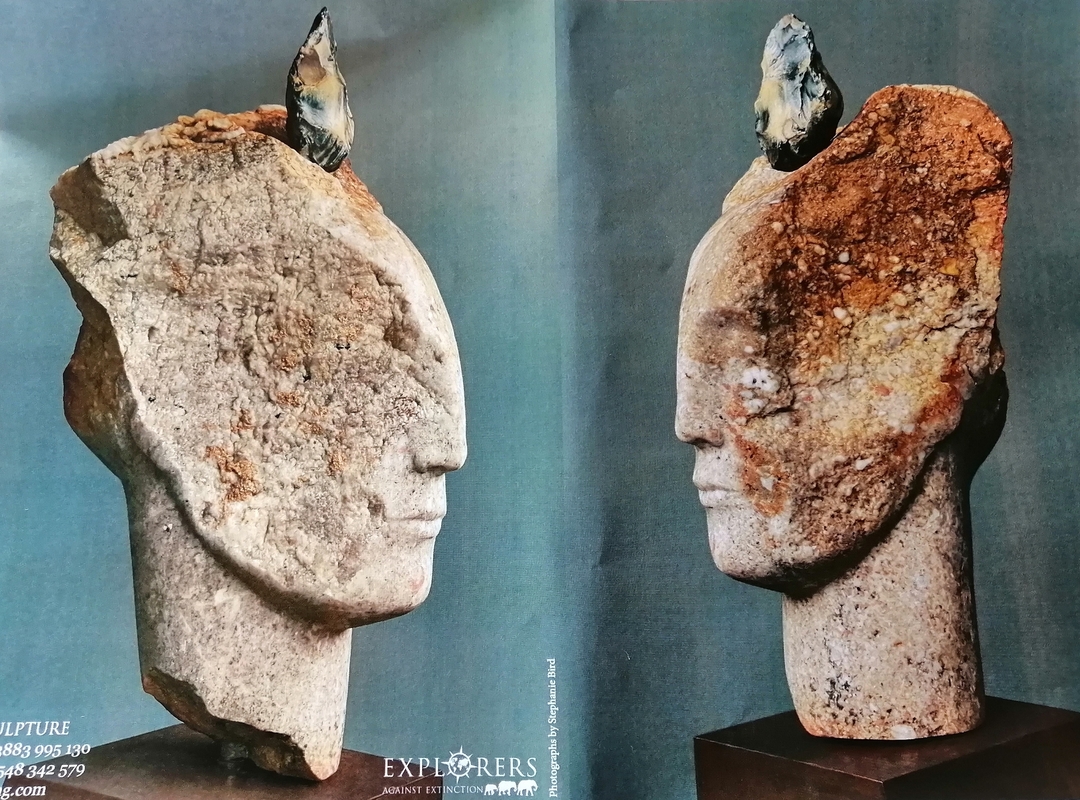
The Connection – A Meeting of Minds, Emily Young (2023)
“An ancestor of modern humans, living some 600,000 years ago, a member of Homo heidelbergensis, made a refined hand-axe one day out of a piece Happisburgh flint. 280,000 years ago a great freeze – climate change – caused their demise. They were shorter than us, with a more pronounced brow ridge. They wore stitched skins. They hunted. They worked stone. And we, Homo sapiens, could have communicated with them. But extinction found them. It’s a profound feeling of connection – poetic; tenuous; a thread through time. There’s a terrible pathos here.”
Emily Young is considered one of the most successful sculptors working in Britain and she has been called Britain’s 'greatest living stone sculptor'. Because of the powerful nature of her pieces, Young became known as a mediator between humanity and nature in its most primitive, basic forms.
The primary objective of her sculpture brings the relationship of humankind and the planet into closer conjunction. The natural beauty, history and energy of material stone, including its capacity to embody human consciousness, can endure into the future of a vast unknowable universe.
Sitting on a rusted oiled-steel plinth, visitors will be able to come face-to-face with this imposing sculpture, carved from Tuscany stone. A Happisburgh hand axe made by early humans Homo heidelbergensis is embedded in its forehead.
Homo heidelbergensis is an extinct species or subspecies of archaic human which lived during the Middle Pleistocene.

